Ensuring your phone system performs as efficiently as possible is essential for any business, small and large. Picking the right handsets is a must if you want your telephone system working effectively for you.
As part of researching and writing this blog post, I’ve used numerous IP handsets to determine which are the best handsets for VoIP. I’ve found that these 5 devices are the best handsets for VoIP available in 2020:
- Polycom VVX 600
- Polycom VVX 410/411
- Yealink T48S
- Cisco IP Phone 8865
- Grandstream GXP1630
The devices above cater to the requirements of every business, with a variety of entry-level, mid-range, and high-end models. I’m going to explain why I’ve recommended each of these devices below, so keep reading for an in-depth look at each phone.
Polycom VVX 600 for VoIP
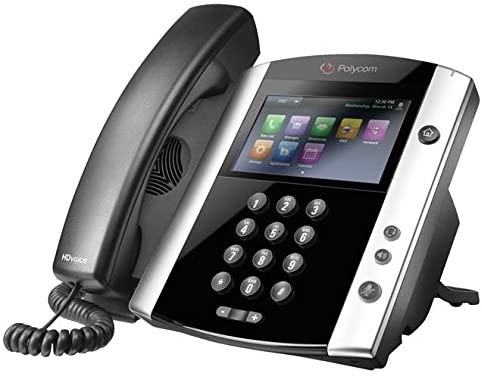
The Polycom VVX 600 is one of the best IP phones that money can buy. It is a little on the costly side, as it is a high-end model. However, your money gets you a feature-packed, stylish device. Let’s have a look at the pros and cons of the VVX 600.
The first benefit to point out is how good this phone looks. The design on the phone is very sleek, with the built-in touch screen display an excellent feature. I think this device looks excellent; it will fit nicely into any office without looking out of place.
Secondly, there is a touch screen interface that makes using the device as quick and easy as can be. Thanks to the touch screen, you can easily make use of all the functionality this phone offers. For instance, you can quickly access your contacts and initiate calls, or you can easily navigate to the browser functionality to partake in a conference call.
Thirdly, this phone has Outlook integration to enable easy multitasking. You can quickly access your calendar while you’re on calls to schedule meetings, or check availability. We all know how frustrating it is – for both parties – to be sat around on a call while you both bring up your Outlook calendars. As the VVX 600 has Outlook integration, you’ll never experience this awkward part of a phone conversation again!
The only notable con of the Polycom VVX 600 is its price tag. Compared to the vast majority of phones on this list, this particular device has a fairly hefty price tag. I believe the phone is worth the money, but it might not be the best option for small businesses looking to keep costs low.

Polycom VVX 410/411 for VoIP
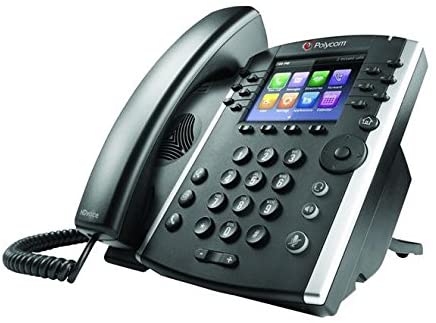
The Polycom VVX 411 is a mid-range IP phone with an excellent feature set. While not as stylish as the VVX 600, it will still look fantastic in any office. Let’s have a look at some of the pros and cons of the 411.
A notable feature of this phone is its 10 quick dial lines. I think this is a feature to note because it makes your life so much easier. You can configure these quick dials as you like, making it easier to call the people you talk to regularly as well as pass calls through to colleagues and other departments.
Zero-touch provisioning is a key selling point of most Polycom devices. What this means is you can manage the phones entirely through a web interface. So you can configure and manage the phones entirely remotely.
HD voice quality means you’ll experience excellent call quality each and every time. The caller sound is exceptionally clear, with the speakerphone on the phone also producing crystal clear sound.
As well as all of the above, you have all the call management features you’d expect from a phone of this price. For instance, you have call holding, send to voicemail, call transferring, and redial functionality.
The only downside of this phone is that it’s rather dated in appearance and doesn’t feel premium. The body of the device is almost entirely plastic, which is why it doesn’t feel particularly modern or high-end.
Yealink T48S for VoIP
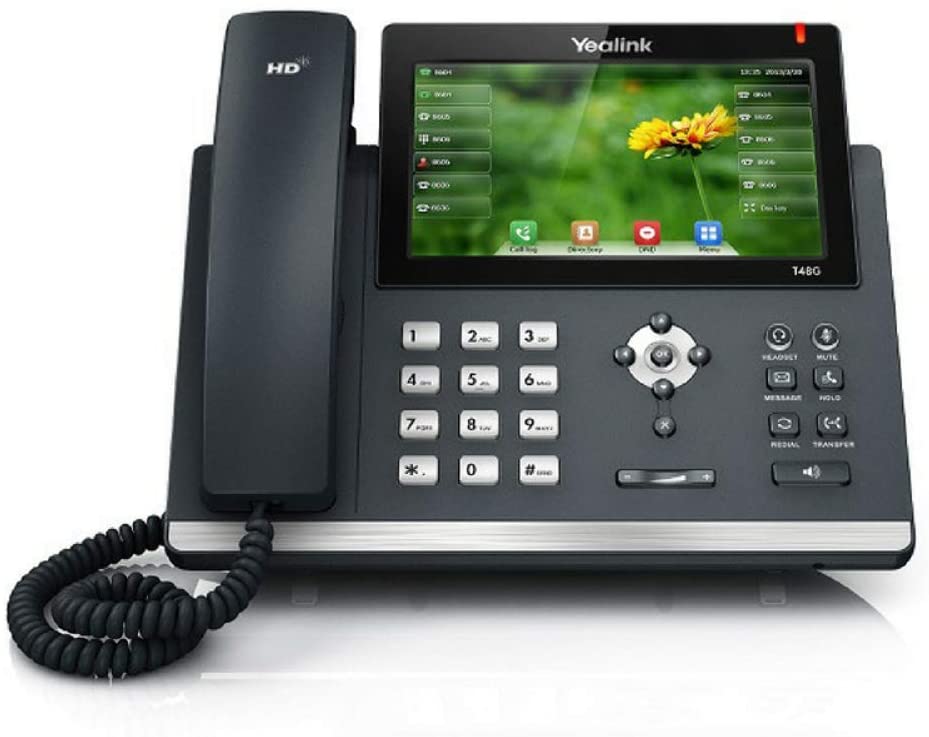
The Yealink T48S is a top of the range IP phone manufactured by Yealink. There are several features that make this phone one of the best available, such as the touch screen. Here are all the pros and cons that you need to know.
The touch screen interface is one of the notable features of the Yealink T48S. Everything, from selecting a contact to call to managing calls, is so much easier when you have a touch screen. The T48S is smartphone-like in that you can interact fully with the touch screen, quickly switch between applications, and manage calls with ease.
Calls using the Yealink T48S are crystal clear quality, thanks to Yealink Optima HD voice technology. The Yealink T48S phone delivers excellent audio quality, regardless of your network conditions. The phone works with a wide range of codecs so you can experience optimal performance regardless of your network bandwidth.
The Yealink T48S is a very stylish phone. The appearance of this device is quite impressive. It’s made primarily of plastic, but really looks the part. It’s a rather sleek device that will look good in any office.
If you like the look of this device, you can purchase it on Amazon by clicking here.
Cisco IP Phone 8865 for VoIP
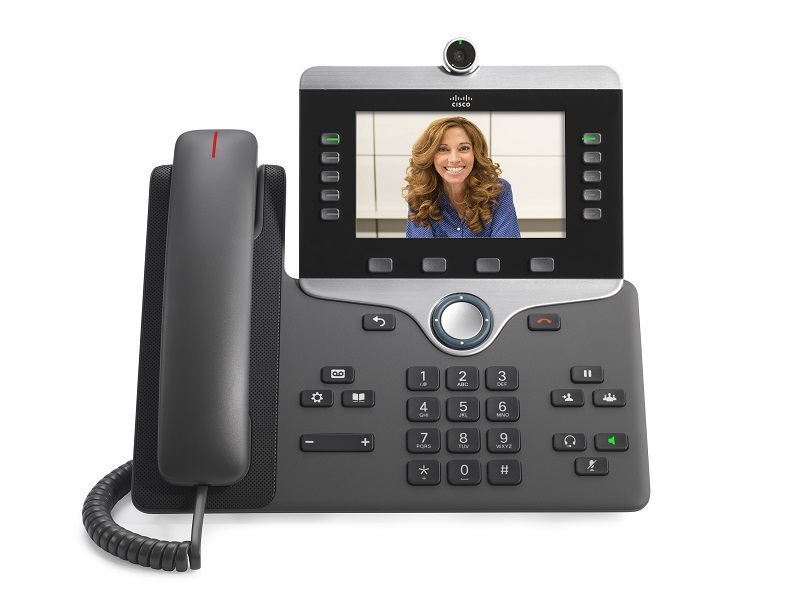
The Cisco IP Phone 8865 is a premium device perform for businesses needing high-quality, advanced HD VoIP communications. The device initially seems a little on the expensive side for an IP phone, but that’s forgetting the fact that it has an integrated webcam for HD video communications. Anyway, here are the pros and cons of this device.
The IP Phone 8865 is more than just a device to facilitate audio calls. The phone also has HD video capabilities, with a webcam built into the device. This is one of my favourite features of this device, which I believe sets it apart as one of the best phones for VoIP that you can buy. It makes your phone an even more essential resource, so you aren’t reliable on general-purpose PCs and laptops for high-quality video communications.
As you’d expect from Cisco, the voice call quality is exceptionally high when using the IP Phone 8865. The device uses wideband audio for crystal clear audio quality, even in poor network conditions. Thanks to Cisco’s Intelligent Proximity feature, you can use the 8865 and your mobile at the same time, enabling you to enjoy crystal clear audio calls on both devices.
As your business grows, you can add expansion modules to this device to give you a greater number of programmable keys. As you can add expansion modules, this means you’re purchasing a device that will benefit your business for years to come. You won’t have to replace this phone in a couple of years because your requirements have changed.
The main drawback of this phone is its hefty price tag. This isn’t a cheap phone. In fact, it will set you back around £280 depending on where you purchase it from. In the end, you get what you pay for. Pay for an excellent device, like this one, and that’s what you get.
You can purchase the Cisco IP Phone 8865 on Amazon by clicking here.
Grandstream GXP1630 for VoIP
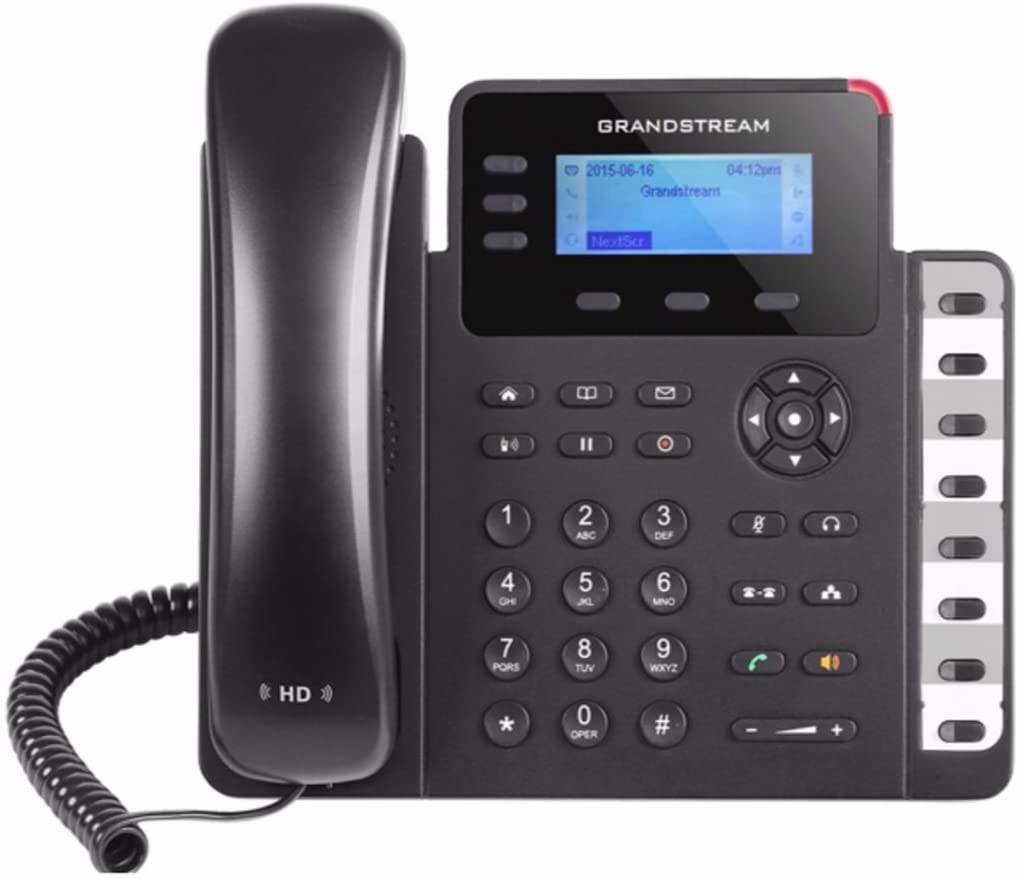
The Grandstream GXP1630 might look a little basic, but we all know that appearance isn’t everything. In fact, this is one of the best entry-level IP phones that you can purchase. There are several pros that set this phone apart from the other entry-level competition, so let’s have a look.
The first benefit I want to point out is that this phone supports PoE, which is the acronym of Power over Ethernet. In general, Power over Ethernet makes your life much easier. You don’t need separate network and power cables for each phone, because the network cable (Ethernet) gives the phone connectivity while also powering it.
Another point to note is the HD quality audio, which is on par with a number of more expensive models. HD audio quality is possible in a variety of network environments, whether you have a lot of bandwidth or a little.
You can configure the GXP1630 entirely remotely, which is another major benefit. If you’re selling these onto your customers, for example, you can ship them out, get them to plug them in, and then configure them without having to do a site visit. Grandstream have an intuitive web interface where you can manage your phones and configure them to meet the requirements of your business.
The only thing that really holds this phone back is its dated appearance. Compared to some of the devices on this list, the GXP1630 is nothing special appearance-wise. However, you can’t really complain for the price tag.
There’s a device in this blog post to meet all requirements and budgets, so I hope you’ve found the ideal IP phone for your VoIP telephone system. Please feel free to let me know your thoughts in the comments below!
